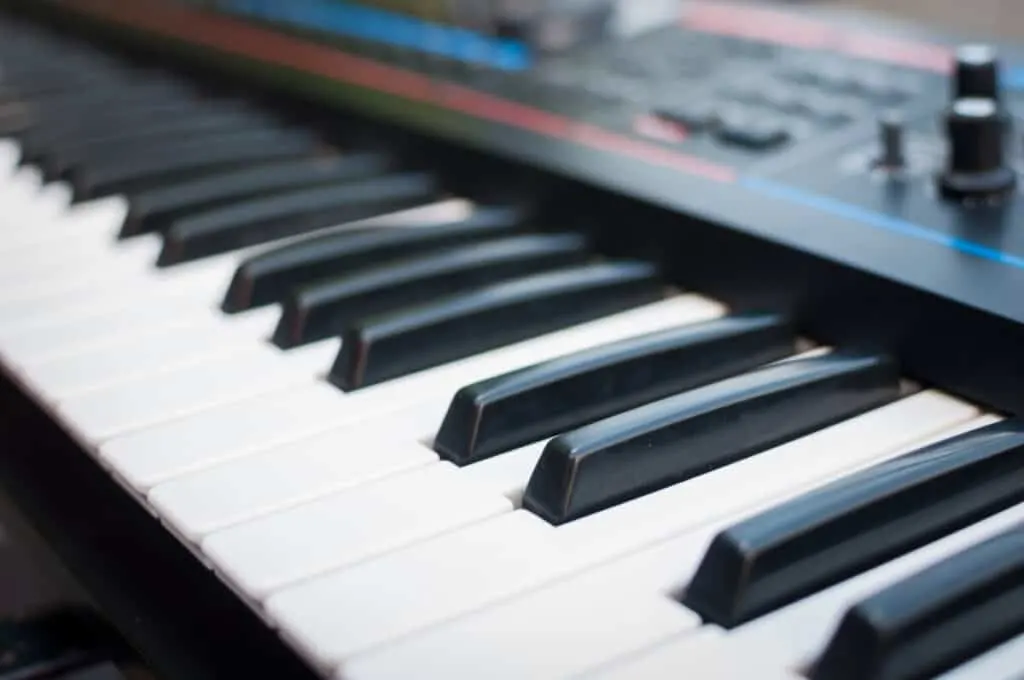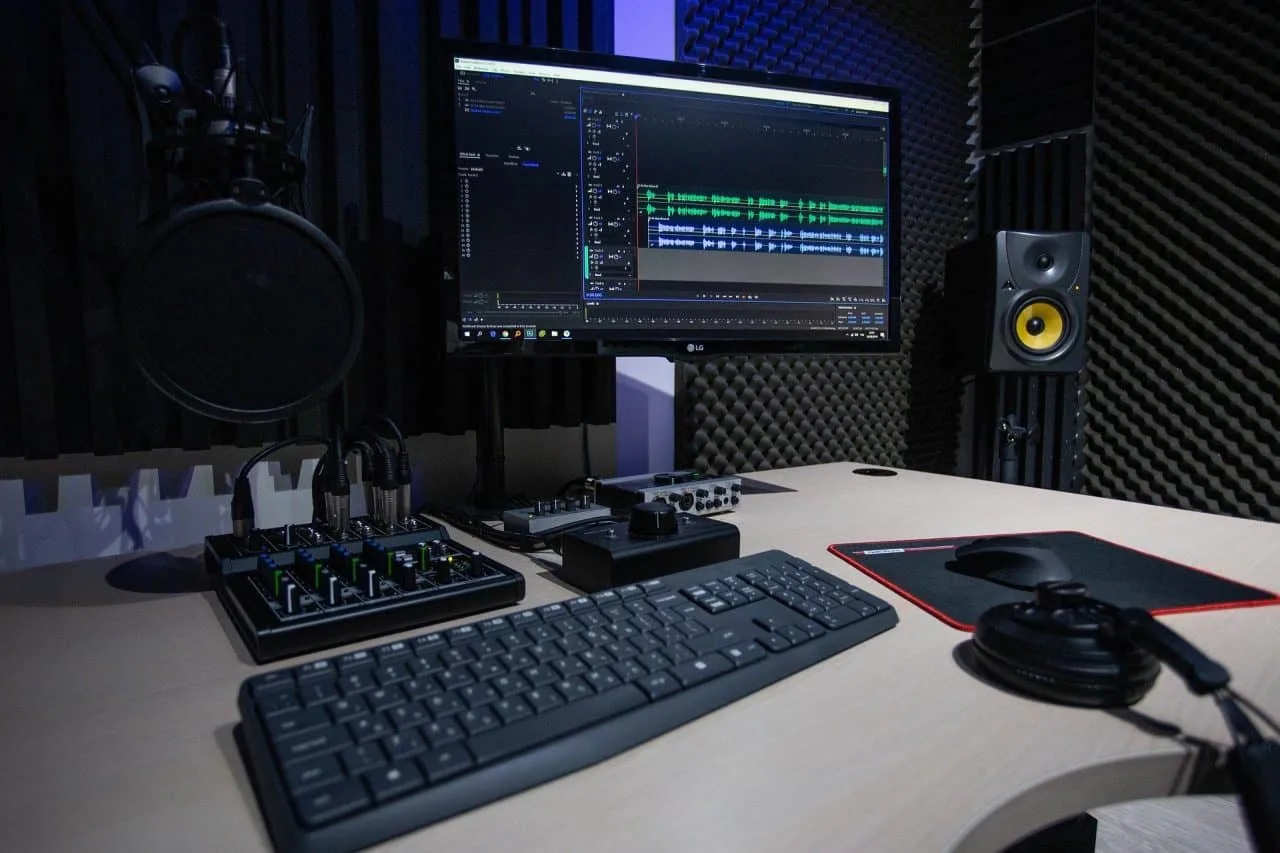MIDI controllers and keyboards share many similarities but also have some inherent differences. Understanding the differences between them is essential if you want to choose a suitable device for your audio-related needs.
Overall, MIDI controllers and keyboards are similar. However, the critical difference is that MIDI controllers are explicitly designed to be used with a DAW for music production. In contrast, keyboards are better suited to performing, recording, or practicing for musicians.
Deciding between a keyboard and a MIDI controller can be tricky, as both offer several benefits and drawbacks. In this guide, we take an in-depth look at the differences between keyboards and MIDI controllers so you can decide which is suitable for your specific situation.
What is a MIDI Controller?
MIDI controllers were first introduced in 1983, and the invention revolutionized the way music was produced. Today, most professional and home recording studios include one or several MIDI controllers to streamline the music production process.
A MIDI controller is an input device that sends Musical Instrument Digital Interface (MIDI) messages to a computer, allowing you to control the software or hardware instruments. Most MIDI controllers feature pads and knobs which enable you to trigger samples, tweak parameters, and manipulate other elements of your music production setup.
They’re commonly used with a DAW to produce music and are usually connected to the computer via USB. You can assign MIDI to any parameter on the controller, allowing you to play and adjust VST (Virtual Studio Technology) instruments and effects with ease.
MIDI controllers are predominantly used for music production but can also be used for live performances to trigger samples, for example.
Budget MIDI controllers are ideal for those who want to get started with music production on a budget but are limited in terms of features. On the other hand, professional-grade MIDI controllers offer more features and better-quality controls, but they come with a steeper price tag.

What is a Keyboard?
A keyboard, also known as an electronic piano or digital piano, is a type of instrument that produces sound through electrical signals. It’s typically used for performing live music, recording in the studio, or practicing.
Unlike a MIDI controller, keyboards usually come with weighted keys and can be used to play actual notes rather than control parameters in a DAW. The sound of the keyboard is generated internally or through an external sound module, and the keys are usually velocity-sensitive for greater expression when playing.
Keyboards have been in production since the 1960s and are still popular today. They come in many varied sizes, from small models that can fit into a backpack to larger versions more suitable for studio use.
High-end keyboards mimic the playability of acoustic pianos, while budget models are designed to provide a basic playing experience. They may also include several controls and parameters for tweaking the sound, onboard effects, and multiple sound banks for producing various sounds.
Key Differences Between MIDI Controllers and Keyboards
Although MIDI Controllers and Keyboards share some similarities, the two devices have some important differences.
MIDI Controllers are designed primarily for music production and not performing, whereas keyboards are better suited to playing live or recording in the studio. MIDI controllers allow you to control the parameters of a DAW, while keyboards typically come with weighted keys and onboard presets for producing various sounds.
Some keyboards may have MIDI connectivity, which makes it possible to use the device as both a MIDI controller and a keyboard. However, this feature is rare on some models.
The table below summarizes the key differences between MIDI controllers and music keyboards.
| MIDI Controller | Keyboard | |
| Main Purpose | Controls other devices such as software synthesizers and drum machines | Generate and play sounds directly |
| Sound Production | Relies on MIDI instruments and software to produce sound | Produces sounds based on internal presets |
| Connectivity | Connects to a computer or other device via USB or MIDI cables | Connects to a computer or other device, but also has built-in sounds that can be played without a connection |
| Keybed Type | May have weighted keys for a more realistic piano feel, while others have unweighted keys or pads for triggering samples | More likely to have weighted keys to replicate the feel of an actual piano |
| Number of Keys | Varies up to 88 keys | Varies up to 88 keys |

Why Should You Choose a Keyboard?
Keyboards can be invaluable for musicians performing live, whether in a group or as solo artists. They give the musician access to a wide range of sounds, from pianos and organs to synthesizers and drums.
The weighted keys also offer greater expression than any MIDI controller, making them better suited to playing live. Keyboards can also be used as part of an electronic drum setup, allowing the player to add bass lines and other accompaniments to their performance.
When it comes to live performance, keyboards are the best choice for musicians who want to control the sounds they produce and express themselves better while playing.
Another advantage of choosing a keyboard over a MIDI controller is that they’re better suited to practicing and developing your piano-playing skills. The weighted keys and natural touch response of some keyboards give you a more authentic experience when playing compared to a MIDI controller.
The onboard sound banks also make it possible to explore different styles of music, from jazz and rock to classical and blues. This makes them optimal for musicians who want to expand their skills with the keyboard or practice at home.
Who Should Choose a MIDI Controller?
MIDI controllers may not be the best choice for developing your keyboard skills or for live performances, but they’re ideal if you’re looking for a device to control parameters in a DAW.
MIDI controllers come with several knobs and buttons that can be assigned to various functions, making it easier to alter and change sounds or mix tracks. This makes them the perfect choice for producers who want a straightforward way to improve their music-making workflow.
Using a MIDI controller can also help you to learn more about the sounds you’re creating. As there are no onboard sound banks, MIDI controllers don’t limit you to the same range of sounds, which can be helpful when exploring different musical styles or pushing your creativity further.
MIDI instruments and VST plugins have become increasingly popular in recent years, which makes it easier to create professional-sounding tracks. Thus, if you’re looking for a device to help you produce music without having to master an expensive keyboard, then a MIDI controller may be the right choice for you.
Final Verdict
To summarize, if you want to produce music and are looking for a device to help you control parameters in a DAW, then a MIDI controller is the best choice. On the other hand, if you want to play live or practice your piano skills, then a keyboard may be what you need.
Both devices have their own advantages and disadvantages, so it’s important to consider your own needs and requirements before making a decision. Ultimately, both MIDI controllers and keyboards can be great tools for music-making, so you won’t be disappointed whichever you choose.
Related Questions
Do you need a DAW to use a MIDI controller?
In most cases, you need to use a digital audio workstation (DAW) with a MIDI controller. A DAW allows you to control parameters, virtual instruments, and effects, making a MIDI controller so versatile.
Can you use a keyboard as a MIDI controller?
Some keyboards have the ability to be used as a MIDI controller. This is known as “controller mode” and allows you to assign knobs and buttons to various functions in your DAW.
Do MIDI controllers come with sound banks?
No, MIDI controllers generally don’t come with sound banks. Instead, you can use VST plugins and virtual instruments to create and manipulate sounds.
